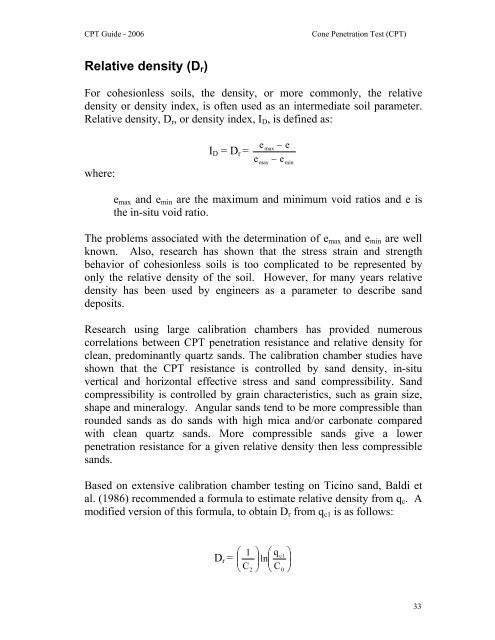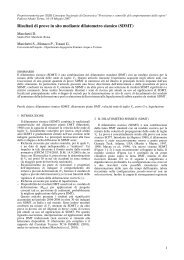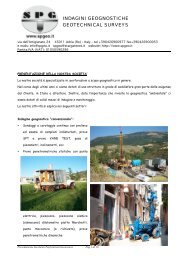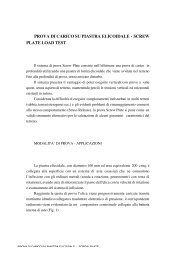GUIDE TO CONE PENETRATION TESTING - SPGEO
GUIDE TO CONE PENETRATION TESTING - SPGEO
GUIDE TO CONE PENETRATION TESTING - SPGEO
Create successful ePaper yourself
Turn your PDF publications into a flip-book with our unique Google optimized e-Paper software.
CPT Guide - 2006Cone Penetration Test (CPT)Relative density (D r )For cohesionless soils, the density, or more commonly, the relativedensity or density index, is often used as an intermediate soil parameter.Relative density, D r , or density index, I D , is defined as:where:I D = D r =eemaxmax− e− emine max and e min are the maximum and minimum void ratios and e isthe in-situ void ratio.The problems associated with the determination of e max and e min are wellknown. Also, research has shown that the stress strain and strengthbehavior of cohesionless soils is too complicated to be represented byonly the relative density of the soil. However, for many years relativedensity has been used by engineers as a parameter to describe sanddeposits.Research using large calibration chambers has provided numerouscorrelations between CPT penetration resistance and relative density forclean, predominantly quartz sands. The calibration chamber studies haveshown that the CPT resistance is controlled by sand density, in-situvertical and horizontal effective stress and sand compressibility. Sandcompressibility is controlled by grain characteristics, such as grain size,shape and mineralogy. Angular sands tend to be more compressible thanrounded sands as do sands with high mica and/or carbonate comparedwith clean quartz sands. More compressible sands give a lowerpenetration resistance for a given relative density then less compressiblesands.Based on extensive calibration chamber testing on Ticino sand, Baldi etal. (1986) recommended a formula to estimate relative density from q c . Amodified version of this formula, to obtain D r from q c1 is as follows:D r =⎛⎜⎝1C⎞ ⎛ q⎟ln⎜⎠ ⎝c12C0⎟ ⎞⎠33






